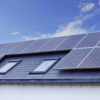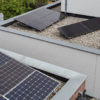The incredible pace at which solar power systems are being added to the grid is a welcome change. The sooner we can get off coal and gas fired plants, the better.
But, the grid itself is having a hard time catching up with all the excess capacity that is being added to it. So much so that we now even have power traffic jams where solar residents cannot export their electricity to the grid because it’s already maxed out.
Even the government is pondering over a legislation where they might charge a solar export during low demand times, and pay extra during peak hours.
So, what does this mean for residents who wish to invest in a solar power system for their homes? If there’s so much power to go around, then can it affect your solar payback period? What do you do if you can’t export your power for extended periods of time?
Let’s take a look into what power traffic jams are and how they might affect your solar power system purchase decision.
Why are Power Traffic Jams Happening?
There are 2.8 million solar power systems throughout Australia as of 2021. And by 2030, six million people are expected to be using a distributed power source.
Unfortunately, our grid was never designed with just such a distribution system in mind. Unlike photovoltaic technology, the electricity grid takes years if not decades to evolve and upgrade.
Not only was our power grid always supposed to supply electricity from fixed singular sources such as coal or gas fired plants, but it was never designed to accept power directly from homes.
Consequently, homeowners with solar power systems in some areas are unable to export excess electricity to the grid. Given the fact that it takes much longer to add more poles and wires to the national grid than to set up solar panels, this problem is expected to increase in the coming years.
Solutions in the Works
The government has come up with a number of proposals to address this issue. However, none are in any stage of implementation as of this writing. The first, and most controversial one is a two way pricing scheme. This solar tax, if you will, incentivizes power export during peak hours, while charging for selling power during off-peak hours.
The proposed legislation has proven to be divisive, to say the least. On the one hand, proponents of solar power argue the tax will unfairly target solar homeowners.
As Ellen Roberts of Solar Citizens Australia points out, big coal and gas based utilities are being overlooked here and have never been subjected to such a charge. The tax unfairly penalizes early solar adopters who are making the grid more resilient and driving down power costs for everyone.
On the other hand, we are also presented with the problem of who pays for upgrading the grid with the required capacity. As senior adviser on climate and energy to Acoss, Kellie Caught says, a third of the country’s population is living in rented property, so, they can’t purchase a solar power system.
Since solar power owners can afford to power their own homes, any cost of upgrading the grid, (which will be either through taxes or higher bills) will fall on those who cannot purchase a solar power system.
The problem here is that all points are equally valid. The grid indeed is in dire need of additional capacity. The cost of building that capacity has to be paid by the consumers.
Those who cannot go solar are indeed enjoying lower electricity prices due to the number of solar power systems being added to the grid. But, charging solar owners simply for selling electricity is unfair to them as well since they didn’t create this problem.
CEO of Australian Energy Market Commission Ben Barr has proposed to incentivize purchase of battery systems and electric vehicles, both of which haven’t received the same level of government support as PV systems have till date. By adding more storage capacity to the grid, energy can be saved for later use. It can also help energy networks manage power distribution in a smarter way.
So, Should You Go For a Solar Power System Then?
While the headlines may seem like getting a solar power system is redundant now, they are far from it. Barr also said that should the proposed laws come into effect, solar homeowners will only be faced with a modest reduction in income, around $70 per year.
Also, you will continue to derive energy savings by not having to purchase any electricity from the grid. And, if you were to invest in a battery backup system, then the rules can even work to your advantage.
Interested in finding out more about how solar can help you save more? Feel free to check out how we work or contact us if you have any questions.





